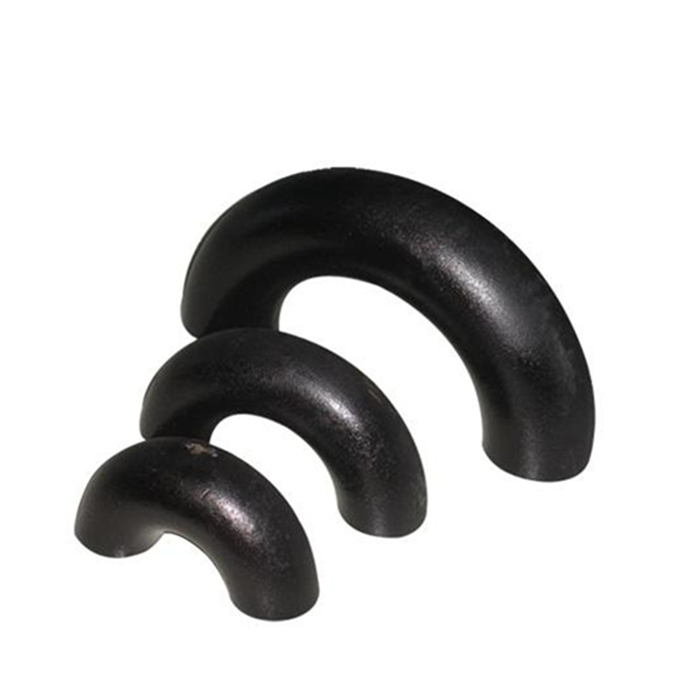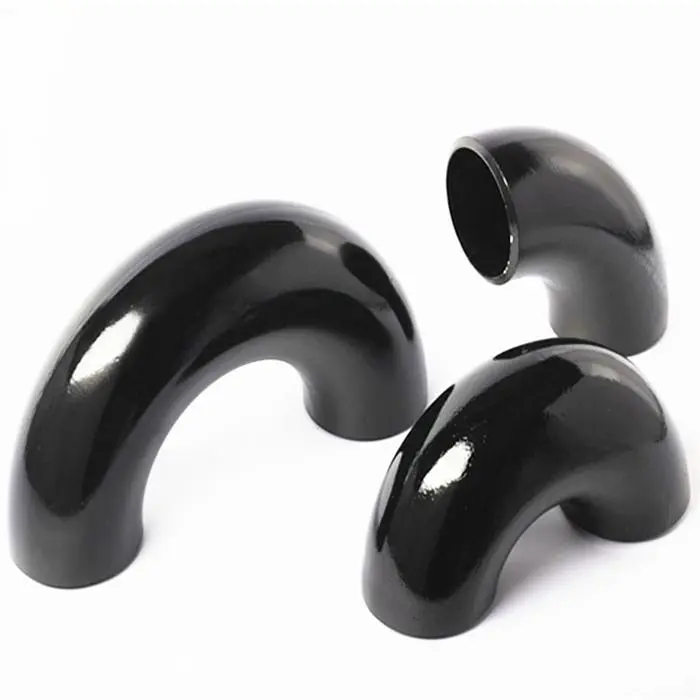Long Radius vs Short Radius Elbows: Which One to Use?
When planning channeling frameworks, selecting the suitable pipe elbows is vital for ideal stream characteristics and framework execution. The choice between long span and brief sweep elbows altogether impacts weight drop, stream speed, and in general framework productivity. Long sweep pipe elbows include a centerline sweep of 1.5 times the ostensible pipe breadth, whereas brief span variations have a centerline span rise to to the ostensible pipe breadth. Understanding these essential contrasts makes a difference engineers and temporary workers make educated choices that adjust space imperatives, weight prerequisites, and taken a toll contemplations in mechanical applications.

Understanding the Technical Differences Between Long and Short Radius Pipe Elbows
Flow Characteristics and Pressure Drop Analysis
Long radius pipe elbows demonstrate superior flow characteristics compared to their short radius counterparts due to their extended curvature path. The gradual directional change in long radius configurations reduces turbulence and minimizes energy losses, resulting in approximately 30-50% lower pressure drop across the fitting. Long radius pipe elbows are great for situations where keeping the system pressure high is important, like in steam distribution networks and high-speed fluid transport systems, because they have a better flow profile. The smooth flow transition also lowers the risk of erosion on the inside surfaces of the elbow, which makes it last longer in uses with rough media. High-quality butt-weld pipe fittings that meet ASME B16.9 standards make sure that the dimensions are exactly right, which maximizes the flow benefits. The 100% RT-tested welds also make sure that the structure stays strong even in harsh working conditions.
Space Requirements and Installation Considerations
Short radius pipe elbows offer distinct advantages in space-constrained installations where compact design takes priority over flow optimization. Because these fittings take up a lot less space when installed, they can be used in tight equipment layouts, underground uses, and retrofit projects that don't have a lot of room. But the tighter bend radius makes the flow more difficult and causes more turbulence, which needs to be thought about when designing the system. When the flexibility of routing pipes beats the pressure drop penalties, installation teams often choose short radius configurations. Modern manufacturing processes let engineers choose between different bend radii that work with limited space and good flow performance. This is especially useful for carbon steel and stainless steel applications where the strength of the materials allows for different geometric shapes.
Material Selection and Manufacturing Standards
Both long and short radius pipe elbows are manufactured from various materials including carbon steel, stainless steel, and specialized alloys to meet specific service requirements. Material selection directly influences the elbow's pressure rating, corrosion resistance, and temperature capabilities. Carbon steel pipe elbows dominate industrial applications due to their cost-effectiveness and adequate performance in standard service conditions, while stainless steel variants excel in corrosive environments and food-grade applications. The manufacturing process for both radius types follows identical quality standards, with ASME B16.9 compliance ensuring dimensional accuracy and wall thickness uniformity. Advanced manufacturing techniques enable precise control over bend geometry, wall thinning characteristics, and surface finish quality, regardless of the chosen radius specification.
Application-Specific Selection Criteria for Pipe Elbow Radius Types
High-Pressure and Critical Service Applications
Long radius pipe elbows are the preferred choice for high-pressure systems, steam lines, and critical process applications where pressure integrity and flow efficiency are paramount. The extended radius configuration distributes stress more evenly across the fitting's curved section, reducing stress concentration factors and improving fatigue resistance under cyclic loading conditions. Because of these features, long radius pipe elbows are necessary in places like power plants, chemical processing plants, and oil refineries where system stability affects both safety and productivity. Because there is less pressure drop, less pumping energy is needed. This saves money in the long run, which often makes up for the higher original investment compared to short radius options.
Compact System Designs and Retrofit Projects
Short radius pipe elbows excel in applications where space optimization takes precedence over flow considerations. Marine installations, HVAC systems, and building service applications frequently utilize short radius configurations to navigate tight spaces and complex routing requirements. These pipe elbows are particularly valuable in retrofit scenarios where existing infrastructure limits available installation space, allowing system modifications without extensive structural changes. The higher pressure drop associated with short radius elbows can be compensated through careful system design, including proper pump sizing and strategic placement of multiple smaller-radius changes instead of single large directional changes.
Economic Considerations and Project Budgeting
Economic factors play a significant role in elbow selection, particularly in large-scale projects where fitting costs represent substantial budget portions. Short radius pipe elbows typically cost 15-25% less than equivalent long radius fittings due to reduced material requirements and simplified manufacturing processes. However, the total cost of ownership must include energy consumption differences resulting from varying pressure drop characteristics. Long radius configurations often provide better long-term value in continuous operation systems through reduced pumping costs and extended service life. Project specifications should evaluate both initial procurement costs and operational expenses to determine the most cost-effective solution for specific applications.
Performance Optimization and System Integration Strategies
Flow Modeling and System Design Considerations
Modern piping system design relies heavily on computational fluid dynamics (CFD) modeling to optimize pipe elbow selection and placement. Long radius pipe elbows demonstrate predictable flow patterns that facilitate accurate system modeling and performance prediction. The gradual flow redirection minimizes secondary flow patterns and reduces the downstream distance required for flow reestablishment, allowing closer spacing of subsequent fittings and system components. This characteristic is particularly important in complex piping networks where multiple direction changes occur within limited space constraints. System designers can leverage these predictable flow characteristics to optimize overall network performance while maintaining design safety margins.
Maintenance and Operational Benefits
The operational benefits of proper elbow selection extend beyond initial installation considerations to include long-term maintenance requirements and system reliability. Long radius pipe elbows typically experience lower erosion rates and reduced stress concentrations, resulting in extended service intervals and reduced maintenance costs. The improved flow characteristics also minimize the risk of flow-induced vibrations and associated fatigue failures in connected piping components. Regular inspection protocols can more easily identify potential issues in long radius configurations due to their predictable wear patterns and stress distribution characteristics. These maintenance advantages often justify the selection of long radius pipe elbows even in applications where initial cost considerations might favor short radius alternatives.
Integration with Modern Piping Technologies
Contemporary piping systems increasingly incorporate advanced materials, coatings, and joining technologies that influence elbow selection criteria. Both long and short radius pipe elbows can be manufactured with specialized coatings, linings, and surface treatments to enhance performance in specific service conditions. The integration of keen observing advances, counting weight sensors and stream meters, benefits from the unsurprising stream characteristics of long span setups, empowering more exact framework execution observing and prescient upkeep methodologies. These mechanical progresses proceed to extend the application run for both elbow sorts whereas giving engineers with upgraded instruments for optimizing framework plan and execution.

Conclusion
When deciding between long radius and short radius pipe elbows, you need to carefully think about the flow needs, room limitations, and cost issues that are unique to your application. When it comes to high-performance systems, long radius configurations have better flow properties and lower pressure drops, while short radius elbows are better for saving space in small installations. The wide variety of steel pipe fittings made by RAYOUNG, including both radius and straight types that meet GOST-R and SGS standards, guarantees steady performance in a wide range of industrial settings.
FAQ
1. What is the primary difference between long and short radius pipe elbows?
Long radius pipe elbows have a centerline radius of 1.5 times the pipe diameter, while short radius elbows have a radius equal to the pipe diameter. This difference significantly affects flow characteristics, with long radius elbows providing smoother flow and lower pressure drop, making them suitable for high-performance applications where flow efficiency is crucial.
2. When should I choose short radius pipe elbows over long radius ones?
Short radius pipe elbows are preferred when space constraints are the primary concern, such as in tight equipment layouts, underground installations, or retrofit projects. They require less installation space and are more cost-effective initially, though they create higher pressure drops that must be considered in system design calculations.
3. How do manufacturing standards affect pipe elbow performance?
Manufacturing standards like ASME B16.9 ensure dimensional accuracy, wall thickness uniformity, and structural integrity. High-quality fittings with 100% RT-tested welds and precise tolerances optimize flow performance and provide reliable long-term service, regardless of whether long or short radius configurations are selected for specific applications.
4. What materials are available for both radius types of pipe elbows?
Both long and short radius pipe elbows are manufactured in carbon steel, stainless steel, and various alloys. Material selection depends on service conditions including pressure, temperature, and corrosion requirements. Carbon steel dominates industrial applications while stainless steel is preferred for corrosive environments and specialized applications.
HEBEI RAYOUNG PIPELINE: Leading Pipe Elbows Manufacturers and Suppliers
At HEBEI RAYOUNG PIPELINE TECHNOLOGY CO., LTD., we excel as premier pipes and fittings manufacturers, delivering exceptional pipe elbows that meet the highest industry standards. Our ISO 9001:2015 certified manufacturing processes ensure consistent quality across our complete product range, from buttweld steel elbows to complex fitting configurations. Whether you require long radius or short radius solutions, our technical expertise and advanced manufacturing capabilities guarantee optimal performance for your specific applications. Experience the RAYOUNG difference in quality, reliability, and customer service that has made us a trusted partner across domestic and global markets. Contact our technical team today at info@hb-steel.com to discuss your pipe elbow requirements and discover how our innovative solutions can enhance your project success.
References
1. American Society of Mechanical Engineers. (2018). ASME B16.9 Factory-Made Wrought Buttwelding Fittings. New York: ASME Press.
2. Crane Company Technical Paper. (2013). Flow of Fluids Through Valves, Fittings, and Pipe. Stamford: Crane Co.
3. Miller, D.S. (1990). Internal Flow Systems: Design and Performance Prediction. Cranfield: BHRA Information Services.
4. Perry, R.H. & Green, D.W. (2019). Perry's Chemical Engineers' Handbook. New York: McGraw-Hill Education.
5. Tullis, J.P. (1989). Hydraulics of Pipelines: Pumps, Valves, Cavitation, Transients. New York: John Wiley & Sons.
6. White, F.M. (2016). Fluid Mechanics. New York: McGraw-Hill Education.

Need a quote? Want to see samples? Just say hello. We’re friendly. We’re fast. And we’re ready when you are.

Welcome to RAYOUNG – Strong Pipes, Stronger Promise




